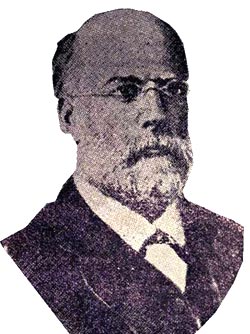2.3.6.4 The story “Francisco”, by Anselmo Suárez Romero (1818 – 1878)

This text was requested by Domingo del Monte for an album that Richard Robert Madden, superintendent of emancipated slaves on the island, would take to England as a testimony to the horrors of slavery. The text had the alternative title “The Delights of the Countryside,” and the writing process was closely followed by Domingo del Monte and other collaborators through drafts exchanged by correspondence. The text was not published until 1880, in New York.
The author belonged to the ruling class, though not to its highest strata, but his family at least possessed a genius, a status that was difficult to shed and capture the essence of life that unfolded, or rather, dissolved, under the yoke of slavery. Nevertheless, the author, based on his own romantic premises, manages to truly identify with his character and offer a rather stark portrait, although he fails to present the literary creature as resigned to the fate imposed upon him by the whites.
The author himself points out some of the inconsistencies in the character’s portrayal: “I was trying to paint a black slave. Who, groaning under the terrible and annoying yoke of servitude, could be so meek, so placid, so full of angelic and holy customs as he…? Francisco is a phenomenon, he is a very singular exception… So it was that from the moment I began to write, I simultaneously began to grow sad: I grew angrier and angrier with the whites as I painted their errors, and since my character, let’s say it once and for all, is fond of patiently tolerating the misfortunes of this poor valley of tears, I came to endow Francisco with that Christian resignation and meekness… Herein lies the cause of my error.”
The rest of the slave characters lack prominence in the work; only the character’s fiancée, the mulatto Dorotea, is portrayed in somewhat greater detail. Some gradations can be seen in the slaves’ own world, as there were differences between those dedicated to agricultural work in the sugar mills and those more urban and civilized from a white perspective. This is also due to the degree and nature of their interactions with the white world.
Some critics have insisted on the Manichaean nature of the characterization, but this is a difficult impasse to avoid, especially since slaves and slave owners constituted the two most obvious poles of the phenomenon, and one of them was the one who exercised coercion. Moreover, these extreme characterizations were abundant in the literature of the period, both in Cuba and in Latin America and Europe.
Beyond these Manichean assumptions and the idealization of positive characters, practically inherent to the Romantic worldview, the text opens avenues for direct access to the world of slavery, and while it doesn’t point to a violent solution, it does contain an implicit denunciation, a call to the collective conscience. At the same time, it constitutes one of the most accomplished stories in a rather mediocre narrative context, where the literary and social ends are inextricably linked.








